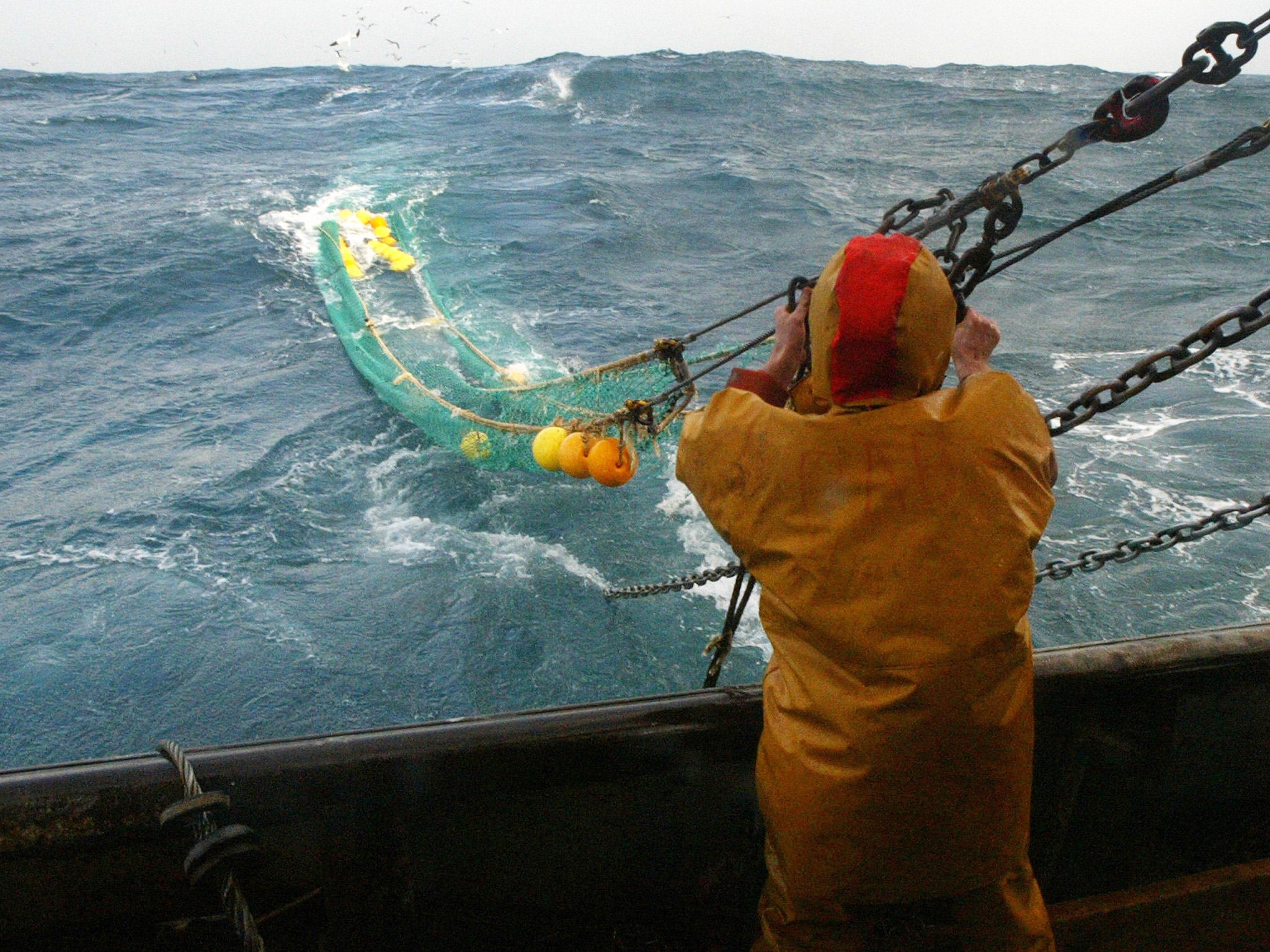Nature studies: Pulse fishing is the 'marine equivalent of fracking'
The technique may be so efficient that it will cause whole areas to be “fished out”

Your support helps us to tell the story
From reproductive rights to climate change to Big Tech, The Independent is on the ground when the story is developing. Whether it's investigating the financials of Elon Musk's pro-Trump PAC or producing our latest documentary, 'The A Word', which shines a light on the American women fighting for reproductive rights, we know how important it is to parse out the facts from the messaging.
At such a critical moment in US history, we need reporters on the ground. Your donation allows us to keep sending journalists to speak to both sides of the story.
The Independent is trusted by Americans across the entire political spectrum. And unlike many other quality news outlets, we choose not to lock Americans out of our reporting and analysis with paywalls. We believe quality journalism should be available to everyone, paid for by those who can afford it.
Your support makes all the difference.Conservationists are increasingly concerned about a radical new method of sea fishing being employed off the British coast, using electric shocks, which has been described as “the marine equivalent of fracking”.
Pulse fishing is claimed by its supporters to be the answer to many of the problems caused by traditional fishing with beam trawls in the same way as fracking, the hydraulic fracturing of underground shale rock formations to release the gas they contain, is said by its proponents to be the answer to our energy problems. Yet, just as fracking has triggered controversy about its side effects, the new fishing technique – which uses powerful pulses of electricity fired from towed electrodes into the seabed – has raised serious worries about its impact, especially as it has not been scientifically evaluated for damaging environmental effects, even though it is now going ahead on a large scale.
Pulse fishing’s electric shocks force commercially valuable bottom-dwelling fish and seafood such as sole and shrimps up from the seabed into the water column, and allows them to be easily caught in a trawl net. It has been taken up with enthusiasm by Dutch fishermen who fish in the southern North Sea and the English Channel, and has enabled them to increase greatly their catches of sole – their main target species.
It was brought in because it appears to have significant environmental advantages: it does much less apparent damage to the seabed than the heavy metal chains used in conventional beam trawling, and it is more selective with regard to target species, thus reducing the twin problems of bycatch (dragging up untargeted marine life) and discards (the throwing away of large numbers of unwanted fish, which has been one of the most heavily criticised aspects of the EU’s Common Fisheries Policy, or CFP). Most of all, because pulse fishing gear is much lighter than traditional trawling equipment, it reduces fuel costs by over half.
The fuel saving was the reason that Dutch fishermen applied to the European Commission to use the technique, even though electro-fishing was outlawed in EU waters in 1998. In 2009 the Commission issued a derogation, or exception to the regulation, which allowed member states to equip 5 per cent of their beam trawl fleets with pulse fishing gear, and in 2010 five Dutch trawlers converted to the new technique; the cost is about €300,000 a boat.
However, since 2011 the Dutch have dramatically increased the number of pulse fishing boats to more than 80, using an article in the revised CFP which allows projects “in support of avoiding unwanted catches in a fishery.” There are now more than 100 boats actively using the technique, including some Dutch-owned boats sailing under British flags – perfectly legally – which means they can fish in English waters.
The growing concern is that pulse fishing has been brought in so quickly that no proper scientific trials have been carried out on its possible side effects on wider marine life and the seabed – although the Dutch have promised this will be carried out as the fishing proceeds. “The problem is the scale of it,” says Jean-Luc Solandt of the Marine Conservation Society. “It’s OK to do a scientific trial with one or two boats in a completely scientific environment, but this is being carried out on an industrial scale. It’s gone way beyond what the original derogation allowed. It’s science being done on the hoof. It stinks.”
There are fears that the electric shocks may cause long-term damage to the sediments of the seabed and to non-target species, and that the technique may be so efficient that it will cause whole areas to be “fished out”. “The nub of it is that we just don’t know what is happening,” says Jeremy Percy, director of Low Impact Fishers of Europe. “Yet The Dutch have just sprung it on the world. These guys have spent around €300,000 each converting their boats, so it’s not going away. This is the marine equivalent of fracking – it’s meant to be squeaky-clean and wonderful, but it may very well not be. The real problem is that we just don’t know.”
The Department for Environment, Food and Rural Affairs says the EU regulations are designed to ensure pulse beams avoid adverse impact on our own waters and that it will consider evidence before supporting an EU decision to widen the use of this new technology.
Join our commenting forum
Join thought-provoking conversations, follow other Independent readers and see their replies
Comments